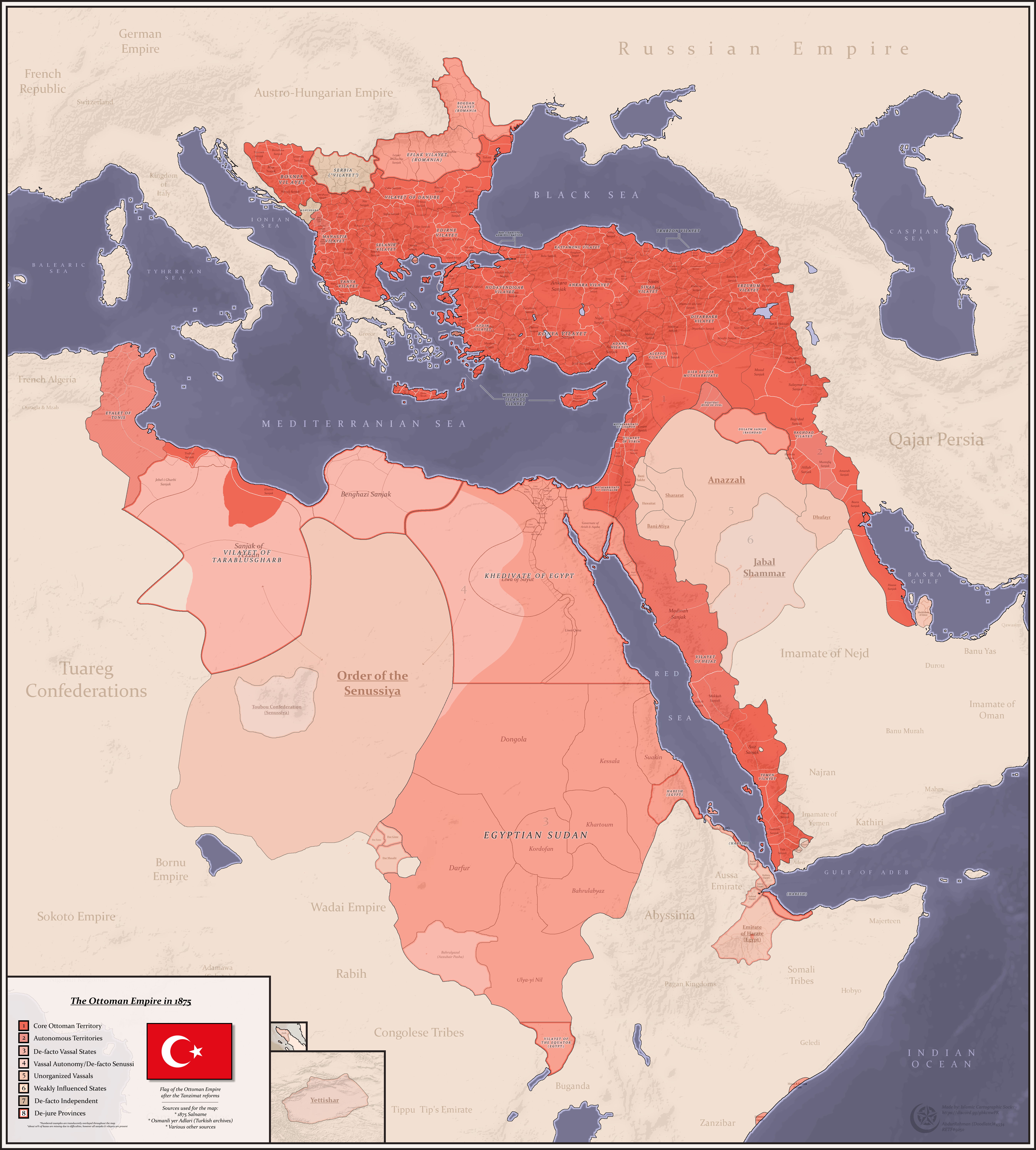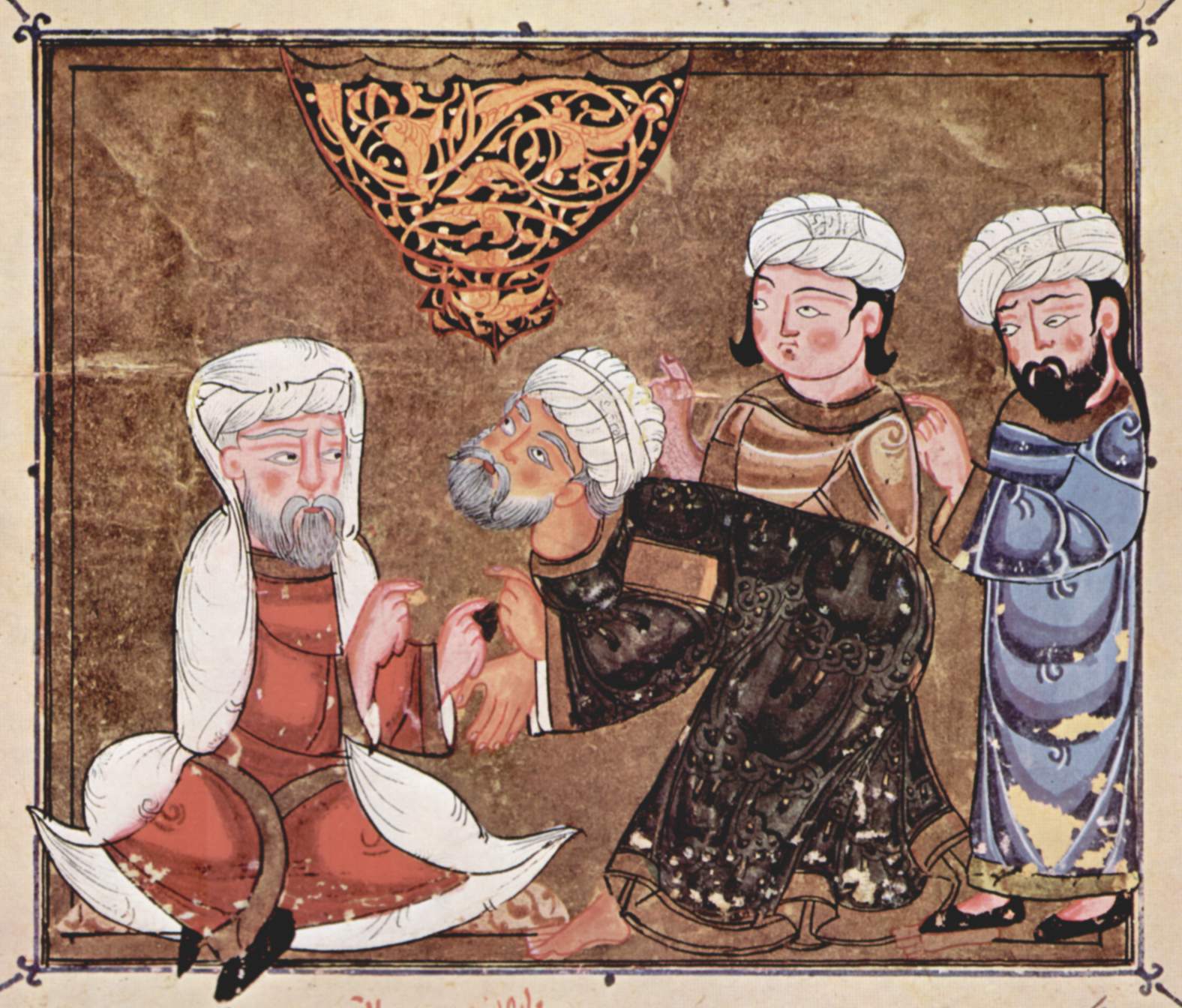|
Subdivisions Of The Ottoman Empire
The administrative divisions of the Ottoman Empire were administrative divisions of the state organisation of the Ottoman Empire. Outside this system were various types of vassal and tributary states of the Ottoman Empire, vassal and tributary states. The Ottoman Empire was first subdivided into provinces, in the sense of fixed territorial units with governors appointed by the sultan, in the late 14th century. The beylerbey, or governor, of each province was appointed by the central government. Sanjak, ''Sanjaks'' (banners) were governed by sanjak-beys, selected from the high military ranks by the central government. Beylerbeyis had authority over all the sancakbeyis in a region. qadaa, Kaza was a subdivision of sancak and referred to the basic administrative district, governed by a Kadı, kadi. It is considered extremely difficult to define the number and exact borders of Ottoman provinces and domains, as their borders were changed constantly. Until the Tanzimat period from 1839 ... [...More Info...] [...Related Items...] OR: [Wikipedia] [Google] [Baidu] [Amazon] |
Ottomans 1875
Ottoman may refer to: * Osman I, historically known in English as "Ottoman I", founder of the Ottoman Empire * Osman II, historically known in English as "Ottoman II" * Ottoman Empire 1299–1922 ** Ottoman dynasty, ruling family of the Ottoman Empire *** Osmanoğlu family, modern members of the family * Ottoman Caliphate 1517–1924 * Ottoman Turks, a Turkic ethnic group * Ottoman architecture * Ottoman bed, a type of storage bed * Ottoman (furniture), padded stool or footstool * Ottoman (textile), fabric with a pronounced ribbed or corded effect, often made of silk or a mixture See also * Ottoman Turkish (other) * Osman (other) * Usman (other) * Uthman (name), the male Arabic given name from which the name and word Ottoman is derived from * Otto Mann, a character in ''The Simpsons'' {{disambiguation ... [...More Info...] [...Related Items...] OR: [Wikipedia] [Google] [Baidu] [Amazon] |
Sanjak
A sanjak or sancak (, , "flag, banner") was an administrative division of the Ottoman Empire. The Ottomans also sometimes called the sanjak a liva (, ) from the name's calque in Arabic and Persian. Banners were a common organization of nomadic groups on the Eurasian Steppe including the early Turks, Mongols, and Manchus and were used as the name for the initial first-level territorial divisions at the formation of the Ottoman Empire. Upon the empire's expansion and the establishment of eyalets as larger provinces, sanjaks were used as the second-level administrative divisions. They continued in this purpose after the eyalets were replaced by vilayets during the Tanzimat reforms of the 19th century. Sanjaks were typically headed by a bey or sanjakbey. The Tanzimat reforms initially placed some sanjaks under kaymakams and others under mutasarrifs; a sanjak under a mutasarrif was known as a mutasarriflik. The districts of each sanjak were known as kazas. These were ini ... [...More Info...] [...Related Items...] OR: [Wikipedia] [Google] [Baidu] [Amazon] |
Qadi
A qadi (; ) is the magistrate or judge of a Sharia court, who also exercises extrajudicial functions such as mediation, guardianship over orphans and minors, and supervision and auditing of public works. History The term '' was in use from the time of Muhammad during the early history of Islam, and remained the term used for judges throughout Islamic history and the period of the caliphates. While the and played the role in elucidation of the principles of Islamic jurisprudence () and the Islamic law (), the qadi remained the key person ensuring the establishment of justice on the basis of these very laws and rules. Thus, the qadi was chosen from amongst those who had mastered the sciences of jurisprudence and law. The office of qadi continued to be a very important one in every principality of the caliphates and sultanates of the various Muslim empires over the centuries. The rulers appointed a qadi in every region, town, and village for judicial and administrative cont ... [...More Info...] [...Related Items...] OR: [Wikipedia] [Google] [Baidu] [Amazon] |
Timariots
Timariot (or ''tımar'' holder; ''tımarlı'' in Turkish language, Turkish) was the name given to a Sipahi cavalryman in the Ottoman army. In return for service, each timariot received a parcel of revenue called a timar, a fief, which were usually recently conquered plots of agricultural land in the countryside. Far less commonly, the sultan would grant a civil servant or member of the imperial family a timar. Also non-military timar holders were obliged to supply the imperial army with soldiers and provisions. The timariots provided the backbone of the Ottoman cavalry force and the army as a whole. They were obligated to fight as cavalrymen in the Ottoman military when called upon. The timariots had to assemble with the army when at war, and had to take care of the land entrusted to him in times of peace. When at war, the timariot had to bring his own equipment and in addition a number of armed retainers (''cebelu''). The timariot was granted feudatory with the obligation to go ... [...More Info...] [...Related Items...] OR: [Wikipedia] [Google] [Baidu] [Amazon] |
Timar
A timar was a land grant by the sultans of the Ottoman Empire between the fourteenth and sixteenth centuries, with an annual tax revenue of less than 20,000 akçes. The revenues produced from the land acted as compensation for military service. A holder of a timar was known as a timariot. If the revenues produced from the timar were from 20,000 to 100,000 ''akçes'', the land grant was called a '' zeamet'', and if they were above 100,000 ''akçes'', the grant would be called a '' hass''.Hütteroth and Abdulfattah, 1977, p. 99 Timar system In the Ottoman Empire, the timar system was one in which the projected revenue of a conquered territory was distributed in the form of temporary land grants among the Sipahis (cavalrymen) and other members of the military class including Janissaries and other servants of the sultan. These prebends were given as compensation for annual military service, for which they received no pay. In rare circumstances women could become timar holders. Howe ... [...More Info...] [...Related Items...] OR: [Wikipedia] [Google] [Baidu] [Amazon] |
Kadiluk
A kadiluk (, ) was the jurisdiction of a kadi, an Islamic judge under the Ottoman Empire. They typically consisted of a major city and its surrounding villages, although some kadis occupied other positions within the imperial administration. Legal issues Kadis oversaw administration of imperial justice, which was particularly important for maintaining order and local control over the sipahis granted fiefs (''timar'') during the early Ottoman expansion. Kazas Within the imperial administration, kadiluks also initially functioned as the kazas, the main subdivisions of the sanjaks, with the kadi overseeing his district's taxation and military conscription. "''These records mirror the diversity of the kadi's responsibilities in the Ottoman city''" These functions were eventually handed over to a separate official called the kaymakam, and the empire's kazas were fully distinguished from its kadiluks in 1864 as part of the '' Tanzimat'' reforms. See also *Subdivisions of the Ott ... [...More Info...] [...Related Items...] OR: [Wikipedia] [Google] [Baidu] [Amazon] |
Agha (Ottoman Empire)
Agha (; ; ; "chief, master, lord") is an honorific title for a civilian or officer, or often part of such title. In the Ottoman times, some court functionaries and leaders of organizations like bazaar or the janissary units were entitled to the ''agha'' title. In rural communities, this term is used for people who own considerable lands and are influential in their community. Regardless of a rural community, this title is also used for any man who is influential or respected. Etymology The word ''agha'' entered English from Turkish, and the Turkish word comes from the Old Turkic ''aqa'', meaning "elder brother". It is an equivalent of Mongolian word ''aqa'' or ''aka''. Other uses "Agha" is nowadays used as a common Persian honorific title for men, the equivalent of "mister" in English. The corresponding honorific term for women is khanum which is also of Turkic origin. However, the title is considered a baron in comparison to European nobility.Imperial, royal and noble r ... [...More Info...] [...Related Items...] OR: [Wikipedia] [Google] [Baidu] [Amazon] |
Agaluk
An agaluk () was a feudal unit of the Ottoman Empire governed by an ''agha'' (tax collector landlord). In Bosnian history, the word ''agaluk'' often refers to land ''owned'' by an ''aga''. See also *Subdivisions of the Ottoman Empire *Kadiluk * Pashaluk *Sanjak * Timar A timar was a land grant by the sultans of the Ottoman Empire between the fourteenth and sixteenth centuries, with an annual tax revenue of less than 20,000 akçes. The revenues produced from the land acted as compensation for military service. A ..., land granted by the Ottoman sultans between the fourteenth and sixteenth centuries References Subdivisions of the Ottoman Empire Types of administrative division Feudalism in the Ottoman Empire {{Ottoman-stub ... [...More Info...] [...Related Items...] OR: [Wikipedia] [Google] [Baidu] [Amazon] |
Mutasarrıf
Mutasarrif, mutesarrif, mutasarriff, or mutesarriff () was the title used in the Ottoman Empire and places like post-Ottoman Iraq for the governor of an administrative district in place of the usual sanjakbey. The Ottoman rank of mutasarrif was established as part of a tanzimat, 1864 reform, and its holder was appointed directly by the Sultan. The administrative district under his authority, the mutasarrifate (), was officially called a () in Turkish or () in Arabic and Persian language, Persian.Meyers (1905–1909)Liwâ A mutasarrif was subordinate to a Wali (administrative title), wali or governor-general of a province, while being of superior rank to a kaymakam.Meyers (1905–1909)Kaimakam Etymology Ottoman Turkish mutasarrıf is derived from the Arabic mutaṣarrif, meaning provincial governor.lexico.commutasarrif Accessed 11 Feb 2022. Mutaṣarrif is the Participle#Arabic, active participle of taṣarrafa, meaning "to act without restriction", "have the right of disposing ... [...More Info...] [...Related Items...] OR: [Wikipedia] [Google] [Baidu] [Amazon] |
Baladiyah
Baladiyah () is a type of Arabic administrative division that can be translated as "district", "sub-district" or "municipality A municipality is usually a single administrative division having municipal corporation, corporate status and powers of self-government or jurisdiction as granted by national and regional laws to which it is subordinate. The term ''municipality' ...". The plural is baladiyat (). Grammatically, it is the feminine of "rural, country-, folk-". The Arabic term amanah () is also used for "municipality". Arab countries Sets Other * Western Region Municipality () * Dubai Municipality () * Unaizah Municipality () Turkish In Turkish, the word belediye (definite accusative ''belediyesi''), which is a loan from Arabic, means "municipality" or "city council". See also * Opshtina References Types of administrative division {{Geo-term-stub ... [...More Info...] [...Related Items...] OR: [Wikipedia] [Google] [Baidu] [Amazon] |
Nahiyah
A nāḥiyah ( , plural ''nawāḥī'' ), also nahiyeh, nahiya or nahia, is a regional or local type of administrative division that usually consists of a number of villages or sometimes smaller towns. In Tajikistan, it is a second-level division while in Syria, Iraq, Lebanon, Jordan, Xinjiang, and the former administrative divisions of the Ottoman Empire, Ottoman Empire, where it was also called a ''bucak (administrative unit), bucak'', it is a third-level or lower division. It can constitute a division of a ''qadaa'', ''mintaqah'' or other such district-type division and is sometimes translated as "subdistrict". Ottoman Empire The nahiye () was an administrative territorial entity of the Ottoman Empire, smaller than a . The head was a (governor) who was appointed by the Pasha. The was a subdivision of a Selçuk Akşin Somel. "Kazâ". ''The A to Z of the Ottoman Empire''. Volume 152 of A to Z Guides. Rowman & Littlefield, 2010. p. 151. and corresponded roughly to a city w ... [...More Info...] [...Related Items...] OR: [Wikipedia] [Google] [Baidu] [Amazon] |



